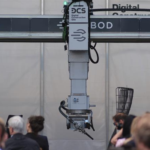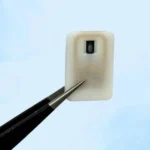In the past, adopting sustainable materials in 3D printing faced hurdles due to the manual tweaking of printer settings. However, a collaborative effort by researchers from MIT, NIST, and Demokritos addressed this issue by developing a 3D printer capable of autonomously identifying parameters for unknown materials.
By modifying the extruder, the core component of a 3D printer, to measure material forces and flow, the team enabled the printer to determine printing parameters automatically. This advancement significantly reduced the need for manual parameter adjustment, with the generated parameters proving successful in test prints of various renewable materials.

The integration of measurement, modeling, and manufacturing marked a significant milestone in advancing computational metrology. This approach not only streamlines the adoption of sustainable materials but also enhances the potential for digital manufacturing to utilize locally sourced, eco-friendly materials.
This breakthrough in automatic parameter generation not only simplifies the adoption of sustainable materials but also holds promise for reducing the environmental impact of additive manufacturing. By enabling the use of recycled and bio-based filaments with variable properties, this research contributes to the sustainable evolution of 3D printing technology.
“By developing a new method for the automatic generation of process parameters for fused filament fabrication, this study opens the door to the use of recycled and bio-based filaments that have variable and unknown behaviors.” said Alysia Garmulewicz, an associate professor in the Faculty of Administration and Economics at the University of Santiago.
“Importantly, this enhances the potential for digital manufacturing technology to utilize locally sourced sustainable materials.”
Moving forward, the researchers aim to further streamline the process by integrating it directly into 3D printing software. Additionally, they plan to enhance the workflow by incorporating a thermodynamic model of the hot end, paving the way for broader applications in advanced manufacturing.
Source: news.mit.edu
Come and let us know your thoughts on our Facebook, X, and LinkedIn pages, and don’t forget to sign up for our weekly additive manufacturing newsletter to get all the latest stories delivered right to your inbox.









